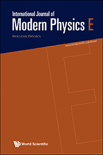
INTERNATIONAL JOURNAL OF MODERN PHYSICS E
Scope & Guideline
Exploring the Universe: Insights from Modern Physics
Introduction
Aims and Scopes
- Nuclear Structure and Decay Processes:
Research in this area includes studies on alpha decay, beta decay, and cluster radioactivity, focusing on the properties and behaviors of various isotopes and their interactions. - Heavy Ion Collisions and QCD:
Papers often explore phenomena related to heavy ion collisions, including jet quenching, particle spectra, and the QCD phase diagram, contributing to the understanding of quark-gluon plasma and nuclear matter. - Nuclear Reactions and Models:
The journal publishes articles on theoretical models for nuclear reactions, including empirical formulas and statistical models, which help predict reaction rates and cross-sections. - Astrophysical Applications and Neutron Stars:
There is a significant focus on the applications of nuclear physics in astrophysics, including studies related to neutron stars, supernovae, and the implications of nuclear interactions in these extreme environments. - Machine Learning in Nuclear Physics:
The incorporation of machine learning techniques to analyze and predict nuclear properties and behaviors is a growing area, showcasing innovative methodologies in the field. - Quantum Chromodynamics (QCD) and Particle Physics:
Research on the fundamental aspects of particle physics, including the properties of hadrons and the interactions of quarks and gluons, is a central theme. - Experimental Techniques and Innovations:
The journal highlights advancements in experimental techniques used in nuclear and particle physics, providing insights into new methodologies and technologies that enhance data collection and analysis.
Trending and Emerging
- Advanced Computational Techniques:
There is a marked increase in the use of advanced computational methods, including machine learning and neural networks, to analyze nuclear data and predict properties, signaling a shift towards more data-driven research. - Interdisciplinary Approaches:
The journal is witnessing a growing trend towards interdisciplinary research, where methodologies and concepts from fields such as astrophysics and condensed matter physics are being integrated into nuclear physics studies. - Exploration of Exotic Nuclei:
Research focusing on exotic nuclei, including superheavy elements and their decay properties, is gaining prominence, reflecting a broader interest in understanding the limits of nuclear stability and the nuclear landscape. - Quantum Information and Quantum Effects:
Emerging studies on quantum effects in nuclear systems and their implications for quantum information science are becoming more prevalent, highlighting the intersection of quantum physics and nuclear research. - Applications in Astrophysics and Cosmology:
The relevance of nuclear physics to astrophysical phenomena, such as nucleosynthesis in stars and the behavior of matter under extreme conditions, is increasingly emphasized, demonstrating the journal's commitment to addressing fundamental questions in the universe.
Declining or Waning
- Traditional Models of Nuclear Structure:
There appears to be a waning interest in some traditional nuclear structure models, as researchers increasingly turn to more sophisticated approaches, such as those integrating machine learning or advanced computational methods. - Basic Nuclear Interaction Studies:
While fundamental interactions remain important, there is a noticeable decline in purely theoretical studies of basic nuclear interactions without a strong experimental or practical application, as the field moves towards more complex scenarios. - Classical Approaches to Fission and Fusion:
Research focusing solely on classical models of fission and fusion processes is becoming less common, with a shift towards exploring these phenomena in the context of new theoretical frameworks and multi-dimensional models. - Narrow Focus on Specific Isotopes:
Studies that concentrate exclusively on specific isotopes without broader implications or connections to larger frameworks in nuclear physics are seeing a decrease, as the trend moves towards more comprehensive investigations.
Similar Journals

Nuclear Physics and Atomic Energy
Bridging gaps in nuclear and high-energy physics.Nuclear Physics and Atomic Energy is a reputable open-access journal that focuses on the fields of nuclear physics and high-energy physics, providing a forum for researchers, professionals, and students to share their findings and advancements. Published by the Institute of Nuclear Research, National Academy of Sciences of Ukraine, this journal has been committed to disseminating knowledge since its inception in 2006, ensuring that scientific advancements remain accessible to a global audience. With an ISSN of 1818-331X and an E-ISSN of 2074-0565, the journal features a diverse array of articles that span the continued exploration and application of nuclear phenomena. Although currently categorized in the Q4 quartile for Nuclear and High Energy Physics in 2023, the journal is steadily working towards increasing its impact and engagement within the academic community. With a Scopus rank of #74 out of 87 in its category, it serves as a valuable resource for advancing crucial research in a vital scientific area. Researchers are encouraged to contribute their innovative studies to foster collaboration and knowledge sharing in this dynamic field.

Moscow University Physics Bulletin
Illuminating the Path of Scientific DiscoveryMoscow University Physics Bulletin is a distinguished journal published by PLEIADES PUBLISHING INC, focusing on a broad spectrum of topics within the field of physics and astronomy. Since its inception, the journal has championed the dissemination of innovative research and advancements, making significant contributions to the academic community. Although currently categorized in the Q4 quartile and ranked #208/243 in the general physics and astronomy field by Scopus, it provides a valuable platform for emerging ideas and discussions in the sector. The journal's publication span, encompassing crucial years from 1975 to 1977, 1982 to 1989, and 2009 to 2024, showcases its resilience and commitment to advancing knowledge. While the journal follows a traditional access model, its content remains pivotal for researchers, professionals, and students aiming to stay abreast of the latest developments in physics. With contributions reflecting both theoretical advancements and practical applications, Moscow University Physics Bulletin is an essential resource for anyone looking to deepen their understanding of contemporary physics.
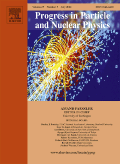
PROGRESS IN PARTICLE AND NUCLEAR PHYSICS
Elevating the Standards of Particle and Nuclear PhysicsPROGRESS IN PARTICLE AND NUCLEAR PHYSICS is a prestigious academic journal published by Elsevier, focusing on the dynamic fields of particle and nuclear physics. Established in 1978 and continuing through 2024, this journal is recognized for its significant contributions to the scientific community, holding a Q1 ranking in Nuclear and High Energy Physics and topping the Scopus ranking in its category. With an impactful platform that encourages the dissemination of groundbreaking research, it attracts a diverse readership of researchers, professionals, and students eager to explore the latest advances in these fields. The journal is headquartered in Amsterdam, Netherlands, and provides an essential resource for those seeking to understand complex phenomena in particle and nuclear science. Although it does not offer Open Access options, it continues to uphold a reputation of excellence and rigor, making it a vital source of information in its domain.

PHYSICS OF ATOMIC NUCLEI
Fostering Knowledge in Atomic and Molecular RealmsPHYSICS OF ATOMIC NUCLEI is a distinguished journal dedicated to advancing the understanding of nuclear and particle physics, published by PLEIADES PUBLISHING INC. With its ISSN 1063-7788 and E-ISSN 1562-692X, this journal serves as a vital resource for researchers, professionals, and students in the fields of atomic and molecular physics, as well as high-energy physics. The journal has been actively contributing to the scientific community since its inception in 1996 and continues to publish valuable findings through 2024. Despite its current standing in the Q4 category for both Atomic and Molecular Physics, and Nuclear and High Energy Physics, there is an abundance of potential for growth and impact in these disciplines, as evidenced by its placement in the Scopus rankings. While the journal does not currently offer open access, it remains committed to disseminating quality research that informs and engages the scientific community. Explore PHYSICS OF ATOMIC NUCLEI to stay at the forefront of nuclear physics research and contribute to the dialogue in this critical area of study.
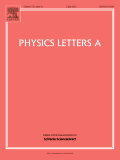
PHYSICS LETTERS A
Connecting Ideas, Inspiring InnovationsPhysics Letters A is a renowned scientific journal published by Elsevier, dedicated to the field of physics and astronomy. Established in 1963, it has continuously evolved, offering a platform for the swift dissemination of significant research findings in various branches of physics. As of 2023, it holds a commendable Q2 ranking in the category of Physics and Astronomy (miscellaneous) and ranks 69th out of 243 journals in the same domain according to Scopus, positioning itself in the 71st percentile of academic impact. With its comprehensive scope, Physics Letters A provides a vital resource for researchers, professionals, and students, facilitating academic discourse and advancing knowledge across the field. Although it does not currently offer Open Access options, its rigorous peer-review process ensures high-quality content. It is centrally located in Amsterdam, Netherlands, and continues to be an essential outlet for innovative contributions to the physics community through the year 2024 and beyond.

ATOMIC DATA AND NUCLEAR DATA TABLES
Bridging theory and application in atomic and nuclear research.ATOMIC DATA AND NUCLEAR DATA TABLES, published by Academic Press Inc Elsevier Science, is a leading journal in the fields of atomic and molecular physics, as well as nuclear and high energy physics. With an ISSN of 0092-640X and an E-ISSN of 1090-2090, this esteemed journal has been providing comprehensive data tables and significant research insights since its establishment in 1969. Spanning until 2024, it continues to serve as an invaluable resource for researchers and professionals aiming to deepen their understanding of atomic interactions and nuclear processes. Holding a commendable Q2 ranking in both relevant categories, it is recognized for its impact, reflected in Scopus rankings, where it ranks 25th out of 87 in Nuclear and High Energy Physics, and 87th out of 224 in Atomic and Molecular Physics. While it does not offer open access, the journal remains a crucial repository for high-quality data essential for scientific endeavors and advancements in these complex fields.

RIVISTA DEL NUOVO CIMENTO
Exploring New Horizons in Scientific Research.RIVISTA DEL NUOVO CIMENTO, published by SPRINGERNATURE, is a prestigious journal dedicated to advancing research in the field of physics and astronomy. Established in 1969, this journal has consistently delivered high-quality, peer-reviewed articles that explore emerging topics and significant developments in the broad scope of general physics. With an impressive Q1 ranking in the 2023 category for Physics and Astronomy and a remarkable Rank #23/243 in Scopus, it is recognized as a leading resource, standing in the 90th percentile of its field. Although not an open-access journal, RIVISTA DEL NUOVO CIMENTO ensures wide dissemination of its impactful content, making it essential reading for researchers, professionals, and students who are eager to stay ahead in their academic pursuits. Join a vibrant community dedicated to excellence and innovation in physics and astronomy by exploring the cutting-edge works published in this esteemed journal.
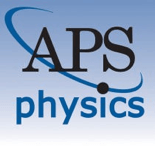
PHYSICAL REVIEW C
Advancing the Frontiers of Nuclear PhysicsPHYSICAL REVIEW C is an esteemed journal published by the American Physical Society, dedicated to advancing knowledge in the fields of nuclear and high-energy physics. With a proud ISSN of 2469-9985 and an E-ISSN of 2469-9993, it has established itself as a leading journal, currently ranked in the Q1 category for its field in 2023, positioning itself in the top tier of scholarly publications. Based in the heart of the United States, at One Physics Ellipse, College Park, MD, PHYSICAL REVIEW C is known for its rigorous peer-review process and is a vital platform for researchers to share their pioneering findings. As part of a prestigious lineup backed by an impressive impact factor, this journal garners significant attention, reflected in its Scopus ranking as #18 out of 87 in the Nuclear and High Energy Physics category, placing it within the 79th percentile. While it currently does not offer open access options, it remains an essential resource for professionals and students seeking to deepen their understanding of nuclear interactions, reaction dynamics, and the fundamental principles governing subatomic particles. The convergence of innovative research from 2016 to 2024 makes it a timely reservoir for groundbreaking studies, thus reinforcing its importance in the scientific community.

INTERNATIONAL JOURNAL OF MODERN PHYSICS A
Elevating research standards in contemporary physics.INTERNATIONAL JOURNAL OF MODERN PHYSICS A, published by WORLD SCIENTIFIC PUBL CO PTE LTD, stands as a pivotal platform in advancing the frontiers of research within the fields of Astronomy and Astrophysics, Atomic and Molecular Physics, and Nuclear and High Energy Physics. Established in 1989, this journal has systematically contributed to the scientific community, with a demonstrated impact as indicated by its Q2 category rankings across these critical disciplines in 2023. Researchers and professionals are encouraged to engage with its rigorous peer-reviewed content, fostering a deeper understanding of modern physics theories and experimental breakthroughs. Although the journal operates under a conventional access model, it remains a vital resource for those seeking to disseminate their findings and stay abreast of cutting-edge developments. With an emphasis on quality and breadth of research, the journal continues to attract submissions from leading physicists and scholars, enhancing its reputation as a key academic resource.
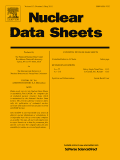
NUCLEAR DATA SHEETS
Connecting Innovators in Nuclear Data and Research.NUCLEAR DATA SHEETS is a premier journal published by Academic Press Inc. Elsevier Science, dedicated to advancing the field of nuclear and high-energy physics. With an impressive impact factor and a distinguished Q2 ranking in the pertinent category as of 2023, this journal is recognized for its significant contributions to the synthesis and dissemination of nuclear data, serving as an essential resource for researchers, professionals, and students alike. The journal has been in continuous publication since 1971, making it a cornerstone of knowledge in the discipline as it converges into 2024. Researchers can explore a plethora of meticulously curated articles that cover the latest findings, theoretical advancements, and experimental results in nuclear data, with the objective of fostering collaboration and innovation within the scientific community. While currently not open access, its publications are accessible through institutional subscriptions, ensuring a wide reach amongst academic and research institutions worldwide. With a high Scopus rank of #10 out of 87 in its field, NUCLEAR DATA SHEETS remains an authoritative source that is instrumental in shaping the future of nuclear physics research.